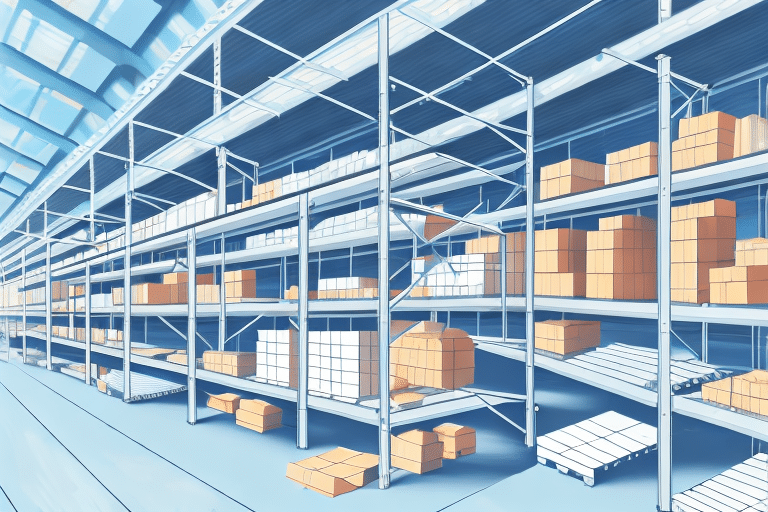Order Fulfillment: Essential Strategies for Business Success
Are you a business owner striving to enhance your operations and boost customer satisfaction? Order fulfillment is a critical component to focus on. It encompasses the entire process of receiving, processing, and delivering customer orders. While it may appear straightforward, effective order fulfillment demands meticulous planning and execution to ensure efficiency and accuracy. In this article, we explore the fundamentals of order fulfillment, its significance for your business, and the strategies and best practices you can adopt to streamline the process and elevate the customer experience.
Understanding Order Fulfillment
The Basics of Order Fulfillment
Order fulfillment involves several key steps: receiving and processing orders, picking and packing products, and shipping them to customers. This journey starts from the moment an order is placed and ends when the customer receives their product. The complexity and duration of this process can vary based on factors such as business type, product variety, and order volume.
The Importance of Efficient Order Fulfillment
Efficient order fulfillment is vital for maintaining operational smoothness and ensuring customer satisfaction. According to a Statista report, businesses with streamlined order fulfillment processes experience higher customer satisfaction rates, leading to increased loyalty and repeat business.
Order Fulfillment Strategies
In-House Fulfillment
Handling order fulfillment internally allows businesses to maintain greater control over the process. However, it requires significant investments in warehouse space, staff, and technology. This approach is often suitable for businesses with manageable order volumes and specialized product needs.
Outsourcing to Third-Party Providers
Outsourcing fulfillment to third-party logistics (3PL) providers can be cost-effective and scalable. It allows businesses to leverage the expertise and infrastructure of specialized providers. However, it may lead to reduced control over the fulfillment process and potential communication challenges.
Dropshipping
Dropshipping involves partnering with suppliers who handle inventory and shipping directly to customers. This model eliminates the need for businesses to manage inventory, reducing overhead costs. However, it can result in less control over product quality and shipping timelines.
Automation and Robotics
Integrating automation and robotics into order fulfillment can significantly enhance efficiency and accuracy. Automated systems handle tasks like picking, packing, and sorting, reducing human error and speeding up the process. According to a Forbes article, businesses adopting automation report up to a 30% increase in processing speed.
Enhancing Customer Satisfaction Through Fulfillment
The Link Between Fulfillment and Customer Trust
Timely and accurate order fulfillment builds trust with customers. A Harvard Business Review study found that 70% of customers cite delivery speed and accuracy as top factors influencing their satisfaction and likelihood to return.
Effective Customer Service in Fulfillment
Providing excellent customer service throughout the fulfillment process is essential. This includes offering tracking information, handling returns and exchanges efficiently, and addressing any issues promptly. Positive customer interactions during fulfillment can lead to favorable reviews and enhanced brand reputation.
The Role of Technology in Streamlining Fulfillment
Order Management Systems (OMS)
Implementing an Order Management System helps businesses track orders from placement to delivery. An effective OMS ensures accurate inventory levels, reduces processing time, and minimizes errors. For instance, businesses using OMS solutions have reported a 25% reduction in order processing time.
Real-Time Inventory Management
Real-time inventory systems provide up-to-the-minute data on stock levels, helping prevent stockouts and overstocking. This proactive approach ensures that businesses can meet customer demand without unnecessary delays.
Automated Picking and Packing
Automation in picking and packing not only accelerates the fulfillment process but also enhances accuracy. Automated systems reduce human error, ensuring that the right products are shipped to the correct customers every time.
Best Practices for Efficient Order Fulfillment
Optimize Warehouse Layout
A well-organized warehouse layout minimizes the time spent locating and retrieving products. Strategic placement of high-demand items can significantly reduce picking time and increase overall efficiency.
Implement Quality Control Measures
Regular quality checks ensure that orders are accurate and products are in excellent condition before shipping. This reduces the likelihood of returns and enhances customer satisfaction.
Leverage Technology
Utilizing advanced software and automation tools can streamline operations, reduce errors, and improve overall productivity. Investing in the right technology is crucial for maintaining a competitive edge.
Establish Clear Processes and Procedures
Having standardized processes ensures consistency and reliability in order fulfillment. Clear guidelines help employees perform their tasks efficiently and reduce the risk of mistakes.
Measuring and Improving Fulfillment Processes
Key Performance Indicators (KPIs)
Tracking KPIs such as order accuracy, fulfillment speed, and customer satisfaction helps businesses identify areas for improvement. Regular analysis of these metrics enables continuous optimization of the fulfillment process.
Cost-Benefit Analysis
Conducting a cost-benefit analysis helps businesses understand the return on investment (ROI) of their fulfillment strategies. For example, investing in automation may have higher upfront costs but can lead to long-term savings and increased efficiency.
Continuous Feedback and Improvement
Gathering feedback from customers and employees provides valuable insights into the effectiveness of fulfillment processes. Implementing changes based on this feedback fosters a culture of continuous improvement.
Emerging Trends and Innovations in Order Fulfillment
Same-Day Delivery
With increasing customer expectations, same-day delivery is becoming a competitive advantage. Companies like Amazon have set high standards, and other businesses are adapting to meet these demands.
Personalized Packaging
Personalized packaging enhances the unboxing experience and strengthens brand identity. Custom packaging can differentiate a business from competitors and leave a lasting impression on customers.
Sustainable Shipping Practices
Environmental sustainability is gaining importance in order fulfillment. Businesses are adopting eco-friendly packaging materials and optimizing shipping routes to reduce their carbon footprint.
Artificial Intelligence (AI) and Machine Learning
AI and machine learning are revolutionizing order fulfillment by predicting demand patterns, optimizing inventory levels, and improving decision-making processes. These technologies enable businesses to anticipate customer needs and adapt swiftly to market changes.
Integration of Augmented Reality (AR)
AR technology is being used to enhance warehouse operations by providing workers with real-time information and guidance. This leads to faster order processing and reduced errors.
Conclusion
Order fulfillment is a pivotal element for any business that sells products. Ensuring an efficient, accurate, and timely fulfillment process is essential for maintaining customer satisfaction and trust. By understanding the fundamentals, adopting effective strategies, leveraging technology, and continuously measuring and improving processes, businesses can optimize their order fulfillment operations and gain a competitive edge in the marketplace.






















